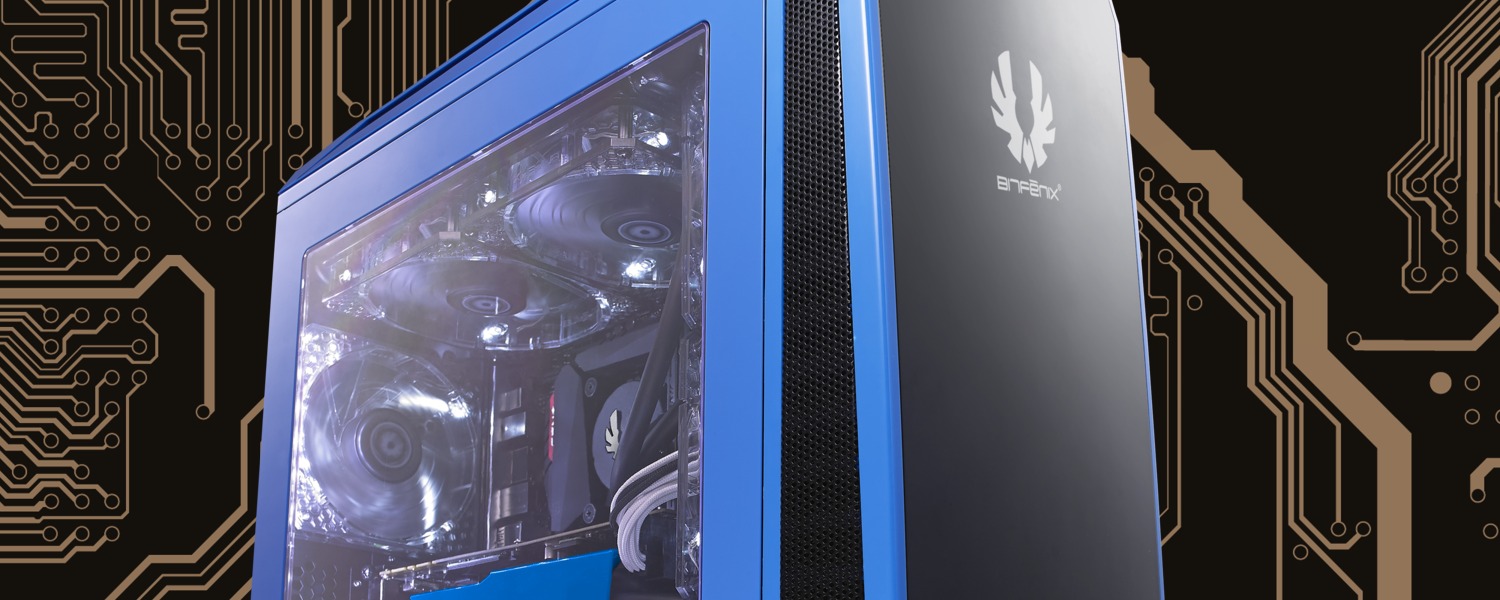Hardware Installation
Because the BitFenix Aegis is such a fun looking case, we didn't want to install our typical test hardware – it deserves something custom. That, and the fact that it's designed to be chock-full of fans meant that we needed to upgrade the cooling anyway.
So the shopping list included five BitFenix Spectre Blue 140mm fans, BitFenix Fury 750G power supply, BitFenix Alchemy Blue Sleeved cables and BitFenix Alchemy White LED Strips.
Not stopping there we had Asrock send over their Z97M-Pro4, a neat little mATX motherboard that sells for just $100. Providing all the memory we could handle was Kingston with a pair of their 8GB HyperX Fury Blue (HX318C10FK2/8) kits.
Keeping the Core i5-4690K processor cool is the Phanteks PH-TC14PE CPU cooler, in blue of course. Gigabyte's Radeon R9 290X has been employed to handle gaming while storage is solved by three Kingston HyperX 3K 240GB SSDs and a pair of WD Black 4TB hard drives.
Putting all this hardware into the BitFenix Aegis was a lot of fun and we began by installing the BitFenix Spectre Blue 140mm fans. The fans can be mounted inside or outside the chassis frame depending on your preference. When installing just fans without a radiator you are best to install them internally so the magnetic dust filter can still be used.
However, because we wanted to save as much room as possible internally we installed the fans on the outside of the case which places them in the plastic front and top covers.
With the fans mounted we moved on to the Asrock Z97M-Pro4 motherboard, which slotted into place after inserting an I/O shield.
Moving around to the back of the motherboard tray we found ample room to access the rear side of the CPU socket. This let us quickly and easily install that big blue Phanteks PH-TC14PE CPU cooler over the Core i5-4690K processor. With the CPU and cooler installed we clipped in the four Kingston HyperX Fury memory kits.
Next we installed all the hard drives and solid-state drives. As we were only installing two 3.5" hard drives we removed the second drive cage below the fixed 2.5" drive location.
Then it was time to drop the BitFenix Fury 750G power supply in. These BitFenix units feature individually sleeved cables.
Routing all the cables in a clean and tidy manner takes quite a lot of time but this is true of most cases. As this is a temporary build we didn't spent too much time here, but I'm sure you'll get an idea of what's possible.
With all the core hardware installed and connected we just had to make a few final adjustments and connect accessories, such as the BitFenix Alchemy white LED strips.
The finished product looks great and we would like to thank Asrock and Kingston for supplying the hardware that helped make this build so exciting.





